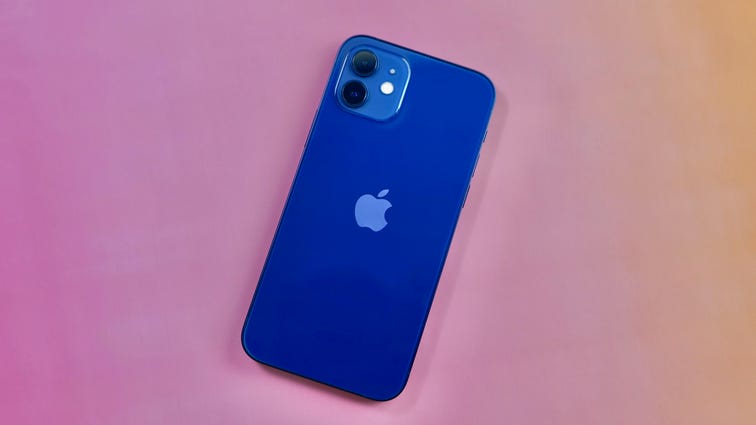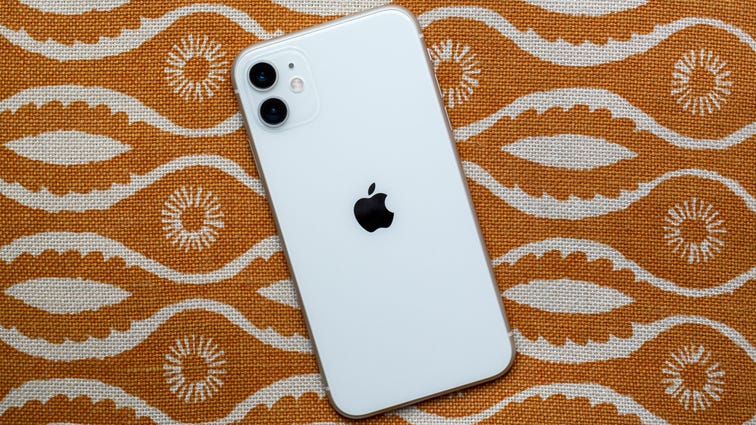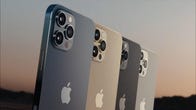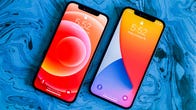iPhone 12 vs. iPhone 11: Every big difference – CNET
Apple’s iPhone 12 is one of the highest-rated phones CNET has ever reviewed. If you’re thinking about an upgrade from the previous year’s iPhone 11 to the base iPhone 12 model (or one of the other three models available), you may be wondering: What exactly is the difference between the two phones? And is it worth it to spend $799 on an iPhone 12 right now (especially if the iPhone 13 could be right around the corner)? If you don’t have either phone, the iPhone 11 now starts at $599 and that $200 gap might be all you need to hear. Here are CNET’s reviews of the iPhone 12 and iPhone 12 Pro, iPhone 12 Mini and iPhone 12 Pro Max.
Read more: iPhone 13 rumors: Here’s when Apple’s next flagship phone could be unveiled
Here’s everything you need to know about how the iPhone 12 compares with the iPhone 11.

 \n ","topic":"","ttag":"","variant":"","viewguid":"","event":"listicle|image|1","correlationId":"","_destCat":"https:\/\/www.apple.com\/shop\/buy-iphone\/iphone-12","productName":"iPhone 12","formatType":"IMAGE","location":"LIST","position":1,"sku":"MGH63LL\/A","dwLinkTag":"article-body|listicle|image","selector":"#article-body #listicle-5dc0c9c4-5b97-46c9-a164-5b079529dfe8 .itemImage"}}” rel=”noopener nofollow” target=”_blank”>
\n ","topic":"","ttag":"","variant":"","viewguid":"","event":"listicle|image|1","correlationId":"","_destCat":"https:\/\/www.apple.com\/shop\/buy-iphone\/iphone-12","productName":"iPhone 12","formatType":"IMAGE","location":"LIST","position":1,"sku":"MGH63LL\/A","dwLinkTag":"article-body|listicle|image","selector":"#article-body #listicle-5dc0c9c4-5b97-46c9-a164-5b079529dfe8 .itemImage"}}” rel=”noopener nofollow” target=”_blank”>


Patrick Holland/CNET
The iPhone 12 (and its higher-end iPhone 12 Pro counterpart) received one of our highest review ratings ever. It features the powerful and fast A14 Bionic processor, dual rear cameras, 5G and a MagSafe feature that allows it to connect to other mobile accessories magnetically.
Read more: iPhone 13 vs. iPhone 12: Rumored features, cameras and more compared

 \n ","topic":"Phones","ttag":"other","variant":"","viewguid":"","event":"listicle|image|2","correlationId":"","assettitle":"","campaign":"other","cval":34,"leadCpc":0.34,"leadProdPrice":599.99,"manufacturer":"Apple","productName":"Apple iPhone 11 (Black, 64GB)","seriesGuid":"2d178b34-ff21-4787-a422-be6221e33437","sku":"MHCP3LL\/A","reviewId":"a9dd8dbe-c8ef-424d-9074-2a46c795c2b3","formatType":"IMAGE","location":"LIST","position":2,"dwLinkTag":"article-body|listicle|image","selector":"#article-body #listicle-854940e5-c530-4ad1-8047-017f323a092c .itemImage"}}” rel=”noopener nofollow” target=”_blank”>
\n ","topic":"Phones","ttag":"other","variant":"","viewguid":"","event":"listicle|image|2","correlationId":"","assettitle":"","campaign":"other","cval":34,"leadCpc":0.34,"leadProdPrice":599.99,"manufacturer":"Apple","productName":"Apple iPhone 11 (Black, 64GB)","seriesGuid":"2d178b34-ff21-4787-a422-be6221e33437","sku":"MHCP3LL\/A","reviewId":"a9dd8dbe-c8ef-424d-9074-2a46c795c2b3","formatType":"IMAGE","location":"LIST","position":2,"dwLinkTag":"article-body|listicle|image","selector":"#article-body #listicle-854940e5-c530-4ad1-8047-017f323a092c .itemImage"}}” rel=”noopener nofollow” target=”_blank”>


Angela Lang/CNET
Design and screen size
There are four iPhone 12 models: the iPhone 12 Mini (5.4-inch), the iPhone 12 and 12 Pro (6.1-inch), and the iPhone 12 Pro Max (6.7-inch). By comparison, there are only three iPhone 11 devices: the iPhone 11 (6.1-inch), the iPhone 11 Pro (5.8-inch) and the iPhone 11 Pro Max (6.5-inch). Basically, the base iPhone 12 and iPhone 11 are the same size. However, the iPhone 12 weighs about one ounce less than the 11.
There are some key differences, however, when it comes to each phone’s design. Both are IP68 rated for water-resistance, have no headphone jack, and have wireless charging capabilities. But the iPhone 12 also has an OLED display (compared to the iPhone 11’s LCD), a magnetic backing that works with new MagSafe chargers and accessories, and a more durable screen strengthened by ceramic. The 12 also has a completely flat design along the edges, with no raised buttons, as the iPhone 11 has.
The iPhone 12 comes in five colors: deep blue, minty green, red, white and black. The iPhone 11 comes in six colors: black, white, purple, green, yellow and Product Red. (Here are the rumors about the iPhone 13’s design and screen size so far.)
Winner: iPhone 12
Screen refresh rate
Though there was speculation that the iPhone 12 Pro’s display may have a 120Hz refresh rate and a ProMotion display (like the iPad Pro), this ended up being just a rumor. Both the iPhone 11 and the iPhone 12 refresh at 60 frames per second, or 60Hz. Most phones are the same. But some, like the Galaxy S20 and the OnePlus 8 Pro, refresh at 120Hz. The higher the refresh rate, the faster and smoother a phone feels when you’re scrolling through apps and websites.
Winner: Tie
Cameras
As is typically the case with new iPhones, the iPhone 12 has upgraded camera capabilities over the iPhone 11 — especially the iPhone 12 Pro models. The iPhone 12 and iPhone 12 Mini largely stick with the iPhone 11’s camera design, with regular, ultrawide and selfie cameras. But they also offer Night Mode photos that now work on the ultrawide and selfie cameras, too, and an improved HDR mode for challenging scenes with bright and dark elements.
Read more: iPhone 12 Pro cameras show off around Lake Tahoe
Meanwhile, the iPhone 12 Pro and iPhone 12 Pro Max get major photography improvements, including a larger image sensor and a fourth telephoto camera for more distant subjects, too. The iPhone 12 Pro has the same 2x zoom telephoto reach as earlier iPhones — a 52mm equivalent focal length — but the Pro Max’s extends to 2.5x zoom, or a 65mm equivalent lens.
Despite this, the iPhone 11 camera is nothing to sneeze at: It has a Night Mode and an ultrawide-angle camera that can add extra detail in photos, along with a great video camera. (Here are the rumors we’ve heard about the iPhone 13’s cameras, too.)
Winner: iPhone 12
The addition of 5G
All iPhone 12 models offer next-generation 5G cellular connectivity, as virtually all new Android phones arriving in the US already have. This means the phones can tap into the high-speed wireless network on the go — which might seem slightly less exciting during the pandemic, as we’re spending more time at home, but will still future-proof your device for the rise of 5G.
The iPhone 11 does not offer 5G connectivity, though many people seem to believe it does.
Winner: iPhone 12
Battery life and processing speed
The iPhone 11 includes Apple’s A13 Bionic processor, while the iPhone 12 includes Apple’s A14 Bionic processor, offering faster speeds that improve the camera and browsing experience. While it’s tough to see the increased speed over the A13 chip, it’s also meant to future-proof your phone, so that it can handle later versions of iOS.
Though Apple doesn’t disclose the battery capacity of its phones, in CNET’s preliminary battery test (running continuous video playback in Airplane mode), the iPhone 12 battery lasted more than 17 hours. The iPhone 11 lasted about 14 hours.
Winner: iPhone 12
Price
The 2019 iPhone 11’s base model cost $699, which was $50 less than the 2018 iPhone XR. Now, with the addition of the iPhone 12, the iPhone 11’s price has dropped to $599.
The iPhone 12 Mini costs $699, the iPhone 12 is $799, the iPhone 12 Pro is $999, and the iPhone 12 Pro Max is $1,099. (See the chart below for UK and Australian prices. Plus, here’s what we know so far about the price of the iPhone 13.)
Winner: iPhone 11
For more, check out our hands-on with the new purple iPhone 12, plus everything to know about Apple’s new AirTag tracking devices, and how to set up your AirTags.
Apple iPhone 12 vs. iPhone 11 specs
| iPhone 12 | iPhone 11 | |
|---|---|---|
| Display size, resolution | 6.1-inch OLED; 2,532×1,170 pixels | 6.1-inch LCD; 1,792×828 pixels |
| Pixel density | 460ppi | 326ppi |
| Dimensions (Inches) | 5.78×2.82×0.29 in | 5.94×2.98×0.33 in |
| Dimensions (Millimeters) | 146.7×71.5×7.4 mm | 150.9×75.7×8.3 mm |
| Weight (Ounces, Grams) | 5.78oz; 164g | 6.84 oz; 194g |
| Mobile software | iOS 14 | iOS 13 |
| Camera | 12-megapixel (wide), 12-megapixel (ultrawide) | 12-megapixel (wide), 12-megapixel (ultrawide) |
| Front-facing camera | 12-megapixel | 12-megapixel |
| Video capture | 4K | 4K |
| Processor | Apple A14 Bionic | Apple A13 Bionic |
| Storage | 64GB, 128GB, 256GB | 64GB, 128GB, 256GB |
| RAM | Not disclosed | Not disclosed |
| Expandable storage | No | None |
| Battery | Not disclosed, but Apple claims 15 hours of video playback | Not disclosed, but Apple claims it will last 1 hour longer than iPhone XR |
| Fingerprint sensor | No (Face ID) | No (Face ID) |
| Connector | Lightning | Lightning |
| Headphone jack | No | No |
| Special features | 5G enabled; MagSafe; water resistant (IP68); dual-SIM capabilities (nano-SIM and e-SIM); wireless charging | Water resistant (IP68); dual-SIM capabilities (nano-SIM and e-SIM); wireless charging |
| Price off-contract (USD) | $829 (64GB), $879 (128GB), $979 (256GB) | $599 (64GB), $649 (128GB), $749 (256GB) |
| Price (GBP) | £799 (64GB), £849 (128GB), £949 (256GB) | £599 (64GB), £649 (128GB), £749 (256GB) |
| Price (AUD) | AU$1,349 (64GB), AU$1,429 (128GB), AU$1,599 (256GB) | AU$999 (64GB), AU$1,079 (128GB), AU$1,249 (256GB) |




